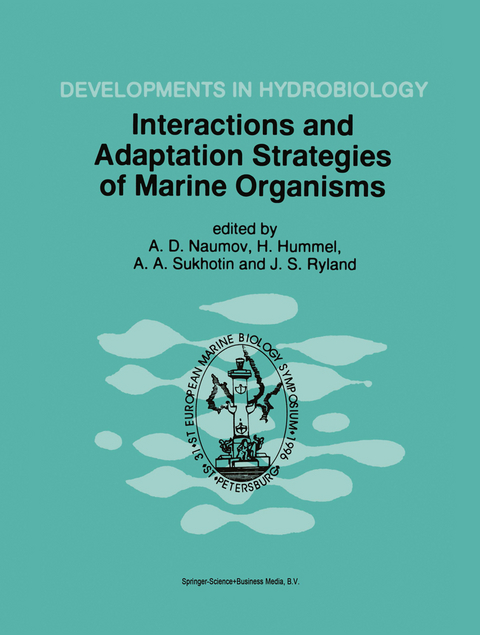
Interactions and Adaptation Strategies of Marine Organisms
Springer (Verlag)
978-0-7923-4927-3 (ISBN)
Research from both eastern and western Europe contributed to this project and during the symposium differences in scientific approaches and views between these two groups became apparent. The contents of this volume reflect these differences.
Researchers and students in marine biology as well as those involved in coastal management and environmental studies will find this volume of interest.
Interactions in Marine Organisms.- The importance of juveniles in structuring a littoral macrobenthic community.- Epibenthic predation in marine soft-bottoms: being small and how to get away with it.- Abundance, feeding behaviour and nematocysts of scyphopolyps (Cnidaria) and nematocysts in their predator, the nudibranch Coryphella verrucosa (Mollusca).- The importance of intraspecific competition in a Littorina littorea population in the Wadden Sea.- Occurrence of epifauna on the periwinkle, Littorinalittorea (L.), and interactions with the polychaete Polydoraciliata (Johnston).- Effects of epibiosis on consumer—prey interactions.- Parasites on an intertidal Corophium-bed: factors determining the phenology of microphallid trematodes in the intermediate host populations of the mud-snail Hydrobiaulvae and the amphipod Corophiumvolutator.- The association between the caprellid Pariambustypicus Krøyer (Crustacea, Amphipoda) and ophiuroids.- Chemically-mediated interactions in benthic organisms: the chemical ecology of Crambecrambe (Porifera, Poecilosclerida).- Fauna associated with detached kelp in different types of subtidal habitats of the White Sea.- Soft-bottom macro invertebrate fauna of North Norwegian coastal waters with particular reference to sill-basins. Part one: Bottom topography and species diversity.- Adaptation Strategies in Marine Organisms.- Mechanisms of salinity adaptations in marine molluscs.- Sensitivity to stress in the bivalve Macomabalthica from the most northern (Arctic) to the most southern (French) populations: low sensitivity in Arctic populations because of genetic adaptations?.- Defenses against oxidative stress in the Antarctic scallop Adamussium colbecki and effects of acute exposure to metals.- A new species of Hyalopomatus (Serpulidae:Polychaeta) which lacks an operculum: is this an adaptation to low oxygen?.- Adaptation capabilities of marine modular organisms.- Morphological convergence of resting stages of planktonic organisms: a review.- Effects of experimental conditions on the feeding rate of Mysismixta (Crustacea, Mysidacea).- Feeding behaviour of Cerastodermaedule in a turbid environment: physiological adaptations and derived benefit.
| Reihe/Serie | Developments in Hydrobiology ; 121 |
|---|---|
| Zusatzinfo | VII, 164 p. |
| Verlagsort | Dordrecht |
| Sprache | englisch |
| Maße | 210 x 279 mm |
| Themenwelt | Naturwissenschaften ► Biologie ► Evolution |
| Naturwissenschaften ► Biologie ► Limnologie / Meeresbiologie | |
| Naturwissenschaften ► Biologie ► Ökologie / Naturschutz | |
| Naturwissenschaften ► Biologie ► Zoologie | |
| ISBN-10 | 0-7923-4927-X / 079234927X |
| ISBN-13 | 978-0-7923-4927-3 / 9780792349273 |
| Zustand | Neuware |
| Haben Sie eine Frage zum Produkt? |
aus dem Bereich


